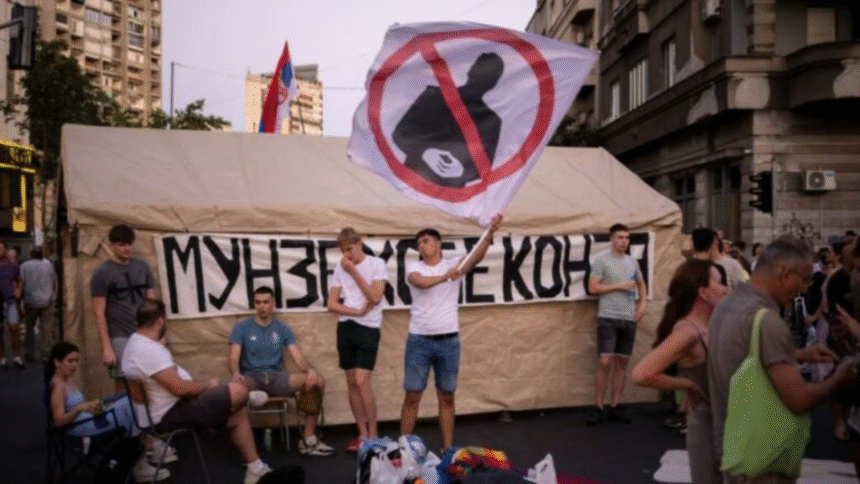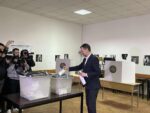In Serbia, barricades are beginning to be removed and traffic is returning to normal, after thousands of anti-government protesters blocked roads in multiple cities in the early hours of June 30, demanding the release of demonstrators who were arrested by police escalating pressure on populist President Aleksandar Vucic.
Led by student groups, protesters erected metal barriers and trash bins in the streets of Belgrade, including a blockade of the Gazela Bridge over the Sava River, Radio Free Europe reports.
News agencies noted that in Novi Sad where the current wave of protests began eight months ago demonstrators surrounded the local headquarters of Vucic’s Serbian Progressive Party (SNS) and pelted the building with eggs.
A student-organized website reported 30 barricade points in Belgrade, with similar actions taking place in at least 22 other cities across Serbia.
The protests intensified after police began detaining participants of the mass June 28 rally in Belgrade. In response, anti-government crowds returned to the streets on June 29, demanding the release of dozens arrested during the initial demonstrations.
“They must release the detainees. It’s shameful how the government treats young people. We want to live in a free country, as the students are demanding,” said protester Gordana Atalanc.
“We’re calling on institutions to do their job—arrest those truly responsible for the violence. Last night they beat people and grabbed anyone in their path,” said Milan Antonijević.
A Radio Free Europe journalist reported hundreds of people blocking a major junction at Autokomanda, in an action organized by residents of the Vozdovac municipality.
Sanja, a law student in Belgrade, told RFE/RL she returned to the protests to “continue the fight for the rule of law.”
Prosecutors said detainees would be held for up to 48 hours on suspicion of violence and attacking police during the mass protest, which was reportedly attended by around 140,000 people.
Interior Minister Ivica Dačić stated on June 29 that 77 people had been arrested, with at least 38 still in custody.
Over the past eight months, thousands of Serbians—initially led by student groups and increasingly joined by broader segments of society—have protested against Vučić and his government.
The movement gained momentum following the collapse of a concrete shelter at the Novi Sad Railway Station on November 1, 2024, which killed 16 people. Protesters blamed the tragedy on corruption and incompetence, with anger quickly spreading nationwide.
Vučić, who has served as Serbia’s president since 2017 and was previously prime minister, faces growing dissent as his five-year term is set to end in 2027. Parliamentary elections are expected by the end of next year.
The government has denied corruption accusations, claiming that an investigation is underway and that several officials have already been arrested in connection with the Novi Sad incident.
Over the weekend, smaller pro-government groups also held counter-protests in Belgrade.
Vučić, who continues to balance ties between traditional ally Russia and the West—while aiming for European Union membership—accused unnamed “foreign powers” of instigating the unrest.
“The state will defend itself, and these bandits will face justice,” he told reporters after the first night of protests.







